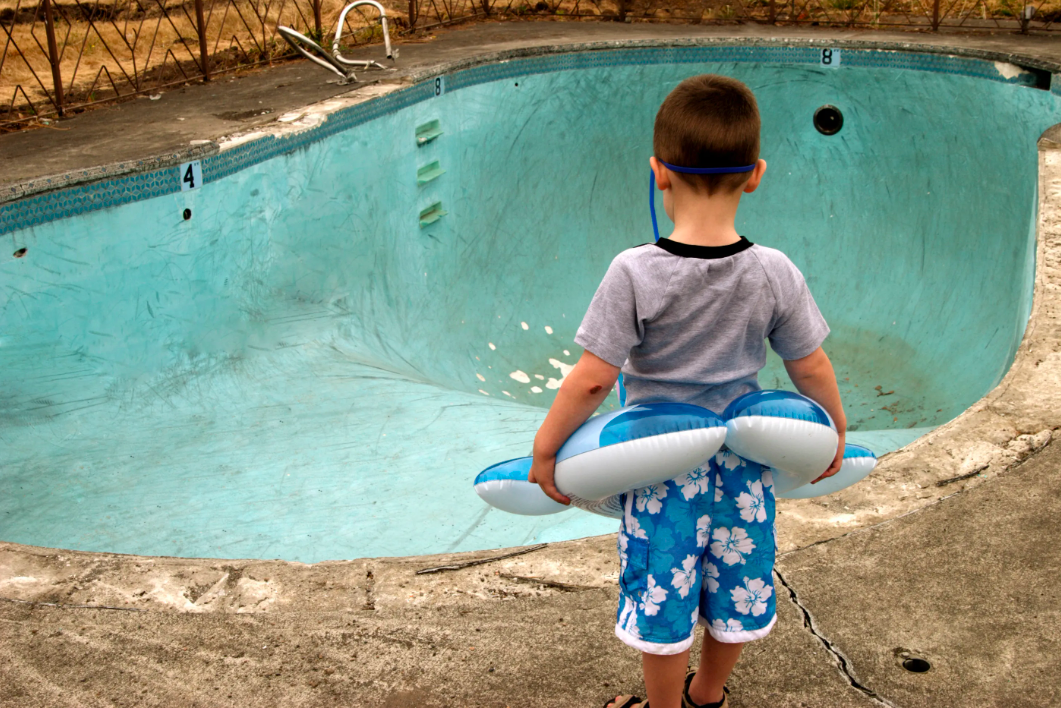Owning a pool has its perks. But even the best things in life would come across various problems and issues that require your attention, such as a broken pool motor cover, broken lights, and the like. We get it; it isn’t fun thinking about damage or repairs because it’s better to focus on the fun. Alas, you can’t ignore swimming pool issues when they arise.
Instead of waiting for problems to occur, it’s best to know about them beforehand. By doing so, you can detect any swimming pool issues to fix before they worsen and prevent them from happening in the first place.
With that said, read on as we share common swimming pool issues you should never ignore.
Common Swimming Pool Issues
Swimming pool issues are bound to happen. It just takes awareness of these problems and how to prevent them so you won’t have to worry. That said, these are the issues you should look out for:
Your Pool Water’s Green

If your pool water looks green, you’ve got algae to thank. This is a clear sign of algae build-up, which occurs if you have neglected your pool’s cleaning and maintenance. It may also be due to not protecting your pool enough by using a pool deck cover or electric pool covers for inground pools.
Either way, green pool water means that your pool is past time for its service. While algae are common in pools, it’s preventable through proper chemicals, maintenance, cleaning, and protection. It’s worth investing in an automatic cover with a pool motor cover so you won’t have to hassle yourself with opening and closing the pool yourself. Fortunately, the pool cover cost isn’t that high and worth investing in to prevent further issues caused by contaminants in the pool.
If you come across algae in your now-green pool, you will need to shock it by giving it a large dose of chlorine. Once you have shocked your pool, clean up all the excess algae using a pool brush, with your pool filter doing the rest of the work. Moving forward, aim to maintain normal pH levels between 7.2 to 7.6 and Aim to prevent further algae growth.
Overused Filter
Clogged and dirty filters are working ones. That’s not the worst problem but a common one, even if you have a pool cover with a solar reel (or any kind of cover, really) to protect your pool from dirt and debris. Fortunately, the solution is easy.
All you need to do is to clean your filters! Clogged filters won’t perform their best, working even harder than required. You will need to check your filters often and clean them when they show dirt and clogging signs. Spray the filters with a hose until it’s clear, then it is ready to perform well again.
Cloudy Water
What if your pool isn’t green but cloudy? That may come from different reasons. Look into the environment your pool is in. Is your pool in an enclosure or protected by a pool cover with a solar reel? Or is it exposed to the outdoor elements all the time?
If your pool is always open, it’s best to have it covered. The pool cover cost isn’t that high, and it will be worth every penny as it prevents cloudy water and the like. It will also lessen the work your filter will have to do.
Cloudy pool water can also indicate a clogged or dirty filter, as well as imbalanced pool chemical levels. You might have added too many chemicals to clean or shock your pool, so have the pH levels tested to see if that’s the case.
Stained View
Stained pools indicate a dirty pool. But what if you already cleaned your pool but still notice the annoying stains? It may come from something else, such as rust from cracks on the foundation or excess metals in the pool. We recommend inspecting the pool’s interiors and exteriors to identify the source.
Cracks or Scratchy Surfaces
Cracks in the pol may be structural or foundational, with a crack in the foundation leading to various issues you can’t fix on your own.

Before that, identify the source of the crack, and it doesn’t always indicate your pool is or will leak. That said, moving foundations and improper installation can lead to such cracks, so you’ll want to seek professional advice for this.
The same goes for a scratchy pool surface, which you’ll notice if your toes are sore or bloody. The scratchy surface may come from the pool installation and materials used. It may also be from calcium build-up. Have your pool’s pH levels tested and inspected by a reputable professional.
Calcium Build-Up
If this occurs, you may come across one of two problems: Either calcium carbonate or calcium silicate.
Carbonate would cause white flaky scales to appear in pools, while silicate will cause white-gray scales. The latter is much worse as this may indicate a leak in the pool’s foundation, with build-up present in various areas. It would take longer to form, meaning it’s been a long-term issue you may not have noticed.
On the other hand, calcium carbonate is easy to remove as the deposits aren’t as heavy as silicate. Either way, you can eradicate the issue by using pumice stone, calcium remover, or scrubbing the affected areas. Prevent this by maintaining a calcium level of 200-400 ppm in your pool.
Wrapping It Up
While swimming pool issues are rampant, there are ways to prevent them by investing in a pool cover. Whether you get electric pool covers for inground pools or a pool deck cover with a solar reel, you benefit from how it protects your pool water from debris and contaminants that can cause some of the issues mentioned above.
If you’re interested in investing in a pool deck cover or enclosure, contact us now! We can share the pool cover cost and recommend the best products that suit your pool style and budget.

